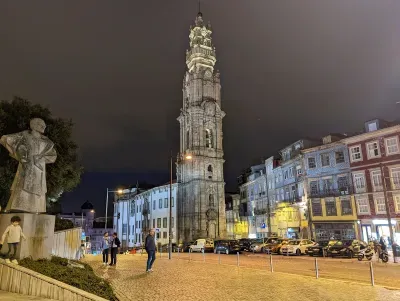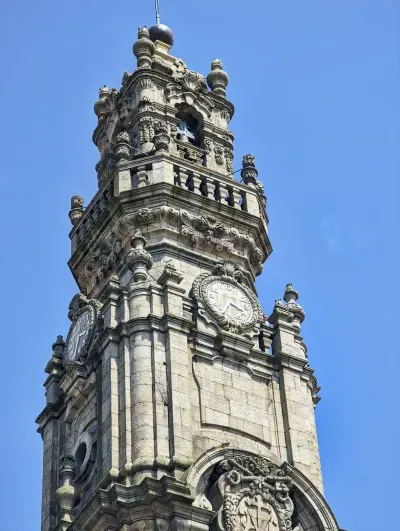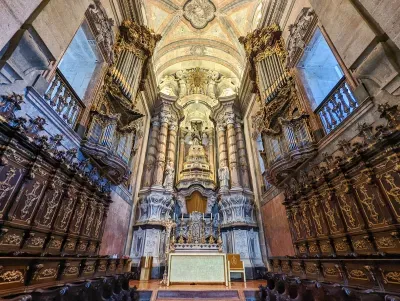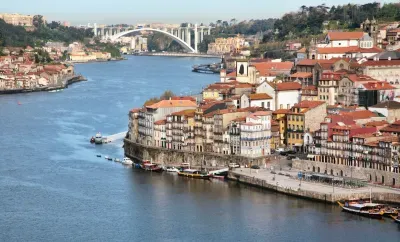
Torre dos Clérigos
Still standing tall on Porto's skyline is the iconic Baroque bell tower and church of Clerigos. Rising over 75 metres from its already elevated position this slender granite tower was the tallest building in Porto when it was built in 1763. In fact it was not until 1999 that this was surpassed with the construction of the Hotel Vila Galé Porto.

Given that you can see Torre dos Clérigos from most of the city it shouldn't surprise you that the views from the top are quite impressive. Of course you have to climb the 225 steps which wind their way up the inside of the tower first. You will also need a reasonable head for heights, which I don't unlike the guys I saw casually having a smoke whilst dangling their feet over a window ledge!
The tower was designed by one of the period's most eminent architect, Nicolau Nasoni, whose Baroque masterpieces can be seen throughout Porto and Northern Portugal. Initially the plan was for two towers but to reduce costs only the one was built, but possibly in grander style.
Set over 6 levels Clerigos Tower is home to two belfries and a carillon of 49 bells. It is worth noting that these bells are still in use so it can get quite loud if you happen to be in the tower on the hour.

The most notable feature on the exterior of the tower is the statue of St Paul in the niche above the doorway. This was the last thing to be added to the building, along with the iron cross on the top.
Some of the finest Baroque flourishes can be seen on the crown of the tower which includes the stone balcony around the observation deck. From here you can take in uninterrupted, panoramic views of the entire city.
The Torre dos Clérigos was actually the final part of a three stage construction. Commissioned by the 'Brotherhood of the Clergy' there is an associated church and the 'Brotherhood House'.
In the 17th and 18th century Portugal had many clergymen and the aim of the Brotherhood was to help them in poverty, sickness and death. Having operated out of a smaller church for many years it was decided a purpose-built facility was needed.
Whilst the land that was offered to the Brotherhood was donated it was on the slopes of what was then known as the "hill of the hanged men". Not only did this present some architectural challenges but there was some stigma attached to the site as it was where executed prisoners were buried.
Igreja dos Clérigos

The 'Church of the Clergy' is an fine Baroque building in its own right. Built in 1750 and taking almost twenty years it precedes the tower by over ten years. Beyond its imposing granite facade and staircase the most notable feature of the church is its oval-shaped plan, the first church in Portugal to have such a design.
If you are visiting the tower it is definitely worth having a look inside the church. The fine Rococo marble interior has a light and airy feel in contrast to many of Porto's other churches. The standout features are the domed ceiling with the coat of arms of the Brotherhood of the Clerics and the pair of Iberian organs which flank the main altar.

After committing over three decades of his life to this project, and making Porto his home, it seems fitting that architect Nicolau Nasoni should be buried here. Up until very recently it was only a legend that Nasoni was buried in Clerigos but in 2015, during renovation works, a crypt containing his tomb was discovered under the main altar.
Address
Phone
Link
Attraction type
